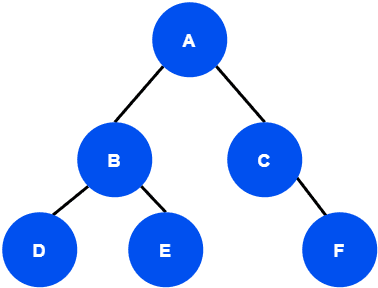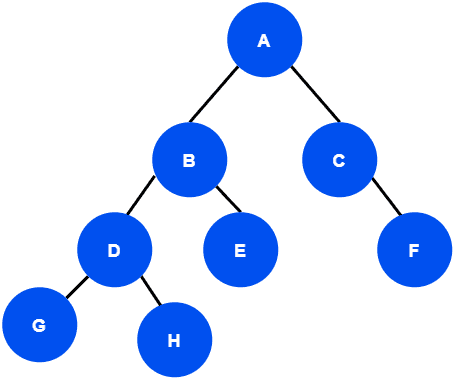1. 概述
在计算机科学中,线性数据结构通常只有一种逻辑上的遍历方式。然而,树(Tree)这种数据结构却可以有多种不同的遍历方法。
本文将介绍常见的树遍历方式,并分析它们的时间复杂度。
2. 什么是树遍历?
树遍历是指以某种顺序访问树中的每一个节点,且每个节点只被访问一次。
由于一个节点可能连接多个子节点,因此遍历顺序会有很多种。我们来看一个例子:

对于这棵树,可能的遍历顺序包括:
- 顺序1:A → B → C → D → E → F
- 顺序2:A → B → D → E → C → F
- 顺序3:D → E → F → B → C → A
根据访问节点的顺序不同,树的遍历主要分为两类:
- 深度优先遍历(Depth-First Traversal)
- 广度优先遍历(Breadth-First Traversal),也称层级遍历(Level-Order Traversal)
深度优先遍历又可以细分为三种方式:
- 中序遍历(In-order Traversal)
- 前序遍历(Pre-order Traversal)
- 后序遍历(Post-order Traversal)
3. 树遍历方式详解
中序遍历(In-order Traversal):先访问左子树,再访问根节点,最后访问右子树。
✅ 常用于二叉搜索树的遍历,输出结果是升序排列。前序遍历(Pre-order Traversal):先访问根节点,再访问左子树,最后访问右子树。
后序遍历(Post-order Traversal):先访问左子树,再访问右子树,最后访问根节点。
层级遍历(Level-Order Traversal):按照树的层级,从上到下、从左到右依次访问节点。
4. 示例演示
我们以如下这棵树为例来演示不同遍历方式的结果:

各种遍历结果如下:
- 中序遍历(In-order):G → D → H → B → E → A → C → F
- 前序遍历(Pre-order):A → B → D → G → H → E → C → F
- 后序遍历(Post-order):G → H → D → E → B → F → C → A
- 层级遍历(Level-order):A → B → C → D → E → F → G → H
5. 树遍历的时间复杂度分析
**所有遍历方式的时间复杂度都是 O(N)**,其中 N 是树中节点的总数。
为什么是 O(N)?
因为每种遍历方式都会访问每个节点一次,所以总操作次数与节点数量成正比。
我们可以用递归的方式来分析。假设树的节点总数为 N,则遍历函数 T(N) 可表示为:
T(N) = T(L) + T(R) + C
其中:
- L 是左子树的节点数
- R 是右子树的节点数(R = N - L - 1)
- C 是常数时间开销(访问根节点)
对于最坏情况(例如一棵极度右偏树),L = 0,递推式变为:
T(N) = T(0) + T(N - 1) + C
展开后可以得到:
T(N) = T(0) + T(N - 1) + C
= T(0) + T(0) + T(N - 2) + 2C
= ...
= N * T(0) + N * C
= O(N)
✅ 结论:不管树的结构如何,所有遍历算法的时间复杂度都为 O(N)
6. 小结
本文介绍了树的几种常见遍历方式:
- 深度优先:中序、前序、后序
- 广度优先:层级遍历
并通过递归方式分析了它们的时间复杂度,**最终得出结论:所有遍历方式的时间复杂度均为 O(N)**。
如果你在实际开发中使用树结构,理解这些遍历方式及其性能特点将有助于你写出更高效、可维护的代码。